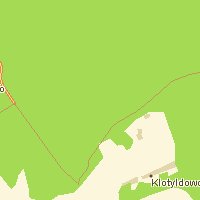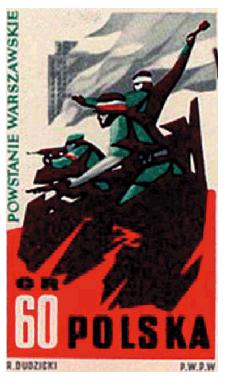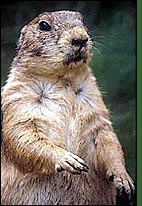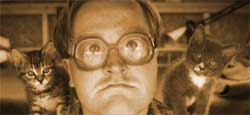witek
4 Apr 2007
Genealogy / Has anyone taken Genealogy DNA tests? [87]
Shewolf,
Lets start with Poles they have predominatley Halogroup R1a1 (Y-DNA)
In human genetics, Haplogroup R1a1 (M17) is a Y-chromosome haplogroup that is spread across Eurasia.
It is common in Europe, Central Asia, and South Asia. High R1a1 frequencies are detected in populations of Ishkashimi (68%), Tajiks (64%), and Kyrgyz (63%).[1][2] In Europe, the highest frequencies are found in Central and Eastern Europe. Today it is found at its highest levels in Hungary (60%, 20%), Poland (56%), Ukraine (54%[3] or 44%), and Russia, where one out of two men has this haplogroup. Relatively high frequencies are also found in Northern Europe (the largest being 23% in Iceland).
The gene has proven to be a diagnostic Indo-Iranian marker[4] and is believed to have lifted on people who left a clear pattern of archaeological remains known as the Kurgan culture, generally identified as early Indo-Europeans, and later by the Vikings,[5] which accounts for the existence of it in, among other places, the British Isles[6][7] Lower frequencies of R1a1 are found among populations of West Asia. Iran appears to have had little genetic influence from the R1a1-carrying Indo-Iranians,[8] attributed to language replacement through the "elite-dominance" model.
The R1a1 is a specific sequence of nucleotides in Y Male chromosome. A single mutation, in one male, who carried R1, occurred in one time. All men who have now R1a1 are direct straight line descendants of that ancestor, R1a1 originator. When other genes cross over the genome genetic composition may be quite different and only the Y chromosome will mark one road. Bryan Sykes in his book Blood of the Isles gives the populations associated with R1a in Europe the name of Sigurd for a clan patriarch, much as he did for mitochondrial haplogroups in his work The Seven Daughters of Eve.
Maybe its possible to have DNA show if your Jewish or not?
In an ethnic sense, an Ashkenazi Jew is one whose ancestry can be traced to the Jews of central and eastern Europe. For roughly a thousand years, the Ashkenazi Jews were a reproductively isolated population in Europe, despite living in many countries, with little inflow or outflow from migration, conversion, or intermarriage with other groups, including other Jews. Human geneticists have identified genetic variations that have high frequencies among Ashkenazi Jews, but not in the general European population. This is more true for patrilineal markers (Y-chromosome haplotypes) than for matrilineal markers (mitochondrial haplotypes).
Shewolf,
Lets start with Poles they have predominatley Halogroup R1a1 (Y-DNA)
In human genetics, Haplogroup R1a1 (M17) is a Y-chromosome haplogroup that is spread across Eurasia.
It is common in Europe, Central Asia, and South Asia. High R1a1 frequencies are detected in populations of Ishkashimi (68%), Tajiks (64%), and Kyrgyz (63%).[1][2] In Europe, the highest frequencies are found in Central and Eastern Europe. Today it is found at its highest levels in Hungary (60%, 20%), Poland (56%), Ukraine (54%[3] or 44%), and Russia, where one out of two men has this haplogroup. Relatively high frequencies are also found in Northern Europe (the largest being 23% in Iceland).
The gene has proven to be a diagnostic Indo-Iranian marker[4] and is believed to have lifted on people who left a clear pattern of archaeological remains known as the Kurgan culture, generally identified as early Indo-Europeans, and later by the Vikings,[5] which accounts for the existence of it in, among other places, the British Isles[6][7] Lower frequencies of R1a1 are found among populations of West Asia. Iran appears to have had little genetic influence from the R1a1-carrying Indo-Iranians,[8] attributed to language replacement through the "elite-dominance" model.
The R1a1 is a specific sequence of nucleotides in Y Male chromosome. A single mutation, in one male, who carried R1, occurred in one time. All men who have now R1a1 are direct straight line descendants of that ancestor, R1a1 originator. When other genes cross over the genome genetic composition may be quite different and only the Y chromosome will mark one road. Bryan Sykes in his book Blood of the Isles gives the populations associated with R1a in Europe the name of Sigurd for a clan patriarch, much as he did for mitochondrial haplogroups in his work The Seven Daughters of Eve.
Maybe its possible to have DNA show if your Jewish or not?
In an ethnic sense, an Ashkenazi Jew is one whose ancestry can be traced to the Jews of central and eastern Europe. For roughly a thousand years, the Ashkenazi Jews were a reproductively isolated population in Europe, despite living in many countries, with little inflow or outflow from migration, conversion, or intermarriage with other groups, including other Jews. Human geneticists have identified genetic variations that have high frequencies among Ashkenazi Jews, but not in the general European population. This is more true for patrilineal markers (Y-chromosome haplotypes) than for matrilineal markers (mitochondrial haplotypes).
 PolishForums LIVE / Archives [3]
PolishForums LIVE / Archives [3]





